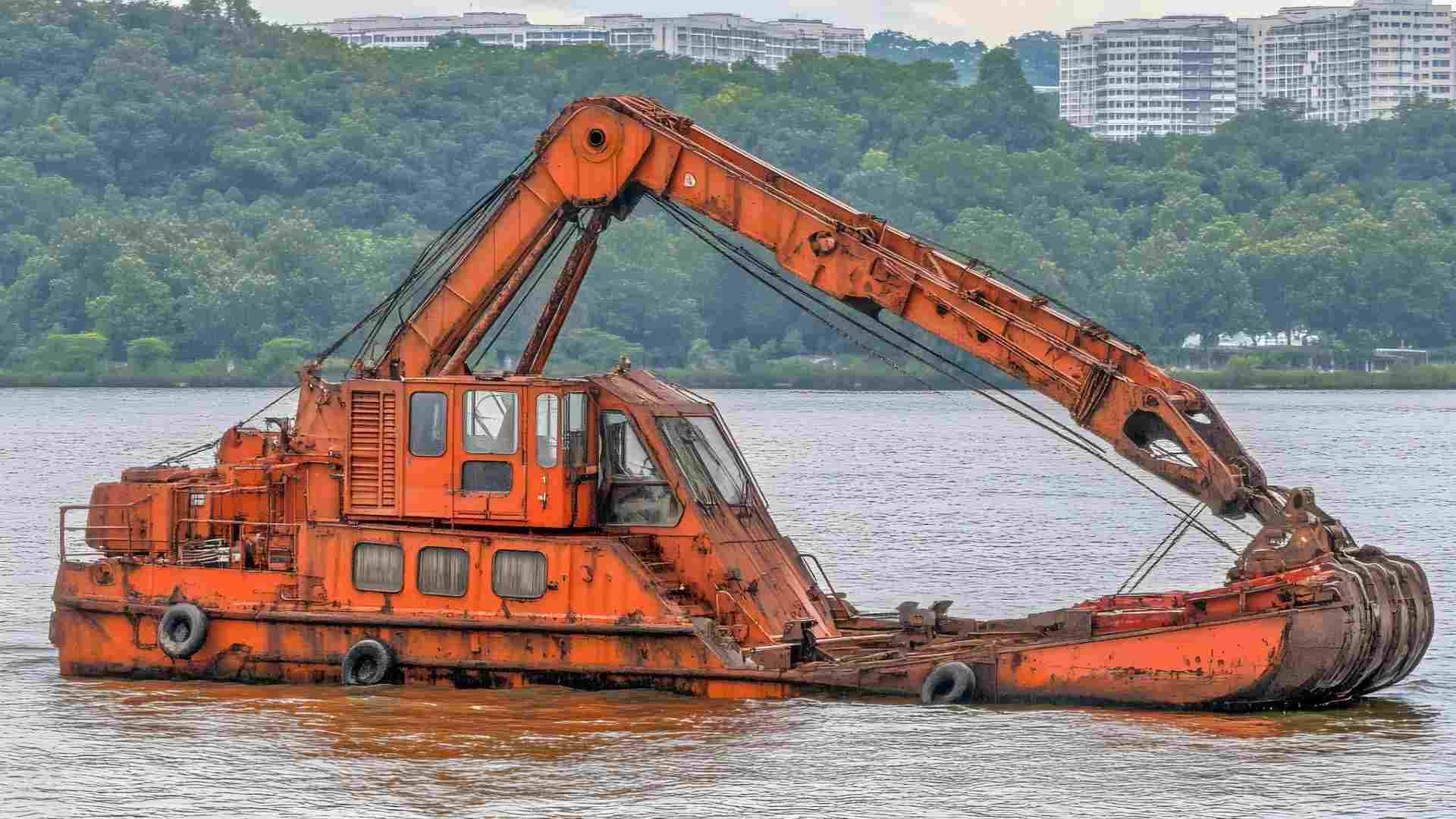Introduction
The Protected Area Management Board (PAMB) of the Mt. Kanlaon Natural Park has formally requested approval from Environment Secretary Raphael Lotilla to conduct river dredging in waterways clogged with hardened lahar within the volcano’s four-kilometer danger zone.
The move comes in response to significant sedimentation in rivers and creeks located in La Castellana and La Carlota City, Negros Occidental, following Mt. Kanlaon’s recent volcanic activity. The lahar—a dense, cement-like mixture of volcanic ash, rock fragments, and water—has settled and hardened, impeding water flow and increasing the risk of flooding during heavy rains.
Lahar Blockages Threaten Water Flow and Safety
Joan Nathaniel Gerangaya, Assistant Regional Director for Technical Services of the Department of Environment and Natural Resources (DENR) Negros Island Region, confirmed that the lahar deposits have drastically altered the natural flow of several waterways. These blockages have reduced the rivers’ capacity to carry stormwater, which could result in upstream flooding, damage to nearby communities, and loss of aquatic habitat.
The hardened lahar is particularly challenging to remove due to its density and compact structure. Without targeted dredging, the debris could persist for years, further degrading river ecosystems and making waterways impassable during the rainy season.
Dredging in a Protected Area: A Delicate Balance
The affected waterways fall within Mt. Kanlaon’s protected area, which means that any river dredging activity requires strict compliance with environmental regulations. The four-kilometer danger zone around the volcano is designated for conservation and safety, restricting human activities to prevent ecological damage and minimize risk to human life in case of renewed volcanic activity.
PAMB’s request to the DENR emphasizes that the dredging operations will focus solely on removing hardened lahar to restore water flow. The proposal also outlines environmental safeguards, including sediment containment measures, minimization of disturbance to riparian vegetation, and continuous water quality monitoring.
The Role of River Dredging in Post-Eruption Recovery
River dredging plays a vital role in the recovery of areas affected by volcanic eruptions. By removing lahar and other volcanic debris, dredging restores the natural channel depth and flow, reducing flood risks and helping aquatic habitats recover. In Mt. Kanlaon’s case, the proposed dredging would:
- Re-establish river capacity to handle heavy rainfall runoff.
- Prevent upstream flooding in La Castellana and La Carlota City.
- Protect infrastructure such as bridges, roads, and irrigation systems from sediment damage.
- Improve water quality by allowing proper sediment transport downstream.
These outcomes are critical not only for public safety but also for maintaining the ecological integrity of the protected area.
Environmental Concerns and Safeguards
Because dredging in protected areas can disrupt sensitive habitats, PAMB’s plan includes measures to minimize ecological impact. The proposal suggests using targeted mechanical dredging techniques rather than large-scale indiscriminate excavation. This method focuses on removing lahar deposits from the main river channel while preserving side banks and vegetation wherever possible.
Sediment control barriers will be installed downstream to prevent loosened material from spreading uncontrollably. Additionally, dredging will be timed to avoid critical fish spawning seasons, ensuring aquatic life has a chance to recover.
The Approval Process
The DENR will review PAMB’s request in light of environmental laws such as the Expanded National Integrated Protected Areas System (E-NIPAS) Act. This review will assess whether the benefits of river dredging in this case outweigh potential environmental risks.
Consultations with local government units, indigenous communities, and environmental groups are also expected as part of the decision-making process. Given the urgency posed by the upcoming rainy season, stakeholders are hopeful for a prompt yet thorough review.
Dredging as a Disaster Risk Reduction Strategy
The situation at Mt. Kanlaon highlights how dredging is not just a maintenance activity but also a disaster risk reduction measure. In volcanic areas, rivers and creeks often act as natural drainage pathways for heavy rains and lahars. When these pathways are blocked, the risk of flash floods and debris flows increases significantly.
By restoring the capacity of these waterways, dredging reduces the likelihood of disaster and improves community resilience. For La Castellana and La Carlota, this means greater protection for homes, farms, and infrastructure.
Community and Economic Impacts
Restoring water flow through dredging is also expected to benefit local livelihoods. Many residents depend on these rivers for irrigation and small-scale fishing. Clearer waterways mean better water supply for crops and improved conditions for aquatic life.
However, there may be temporary disruptions during dredging operations, including restricted access to certain river sections and increased noise. PAMB’s plan includes community coordination to minimize inconvenience and keep residents informed about schedules and safety protocols.
Looking Ahead
If approved, the Mt. Kanlaon river dredging project could begin within weeks, prioritizing areas with the heaviest lahar deposits. The work would be carried out by specialized dredging contractors with experience in post-disaster sediment removal.
Given the continued possibility of volcanic activity, authorities will also monitor Mt. Kanlaon closely during the dredging period. Any signs of renewed unrest could lead to temporary suspension of work for safety reasons.
Conclusion
The PAMB’s request to the DENR underscores the urgency of addressing lahar-clogged rivers within Mt. Kanlaon’s protected zone. Through targeted and environmentally responsible river dredging, it is possible to restore water flow, protect communities from flooding, and support ecological recovery—while still respecting the conservation goals of the protected area.
If approved, this project could serve as a model for how dredging can be safely and effectively integrated into volcanic hazard management and environmental stewardship in the Philippines.
